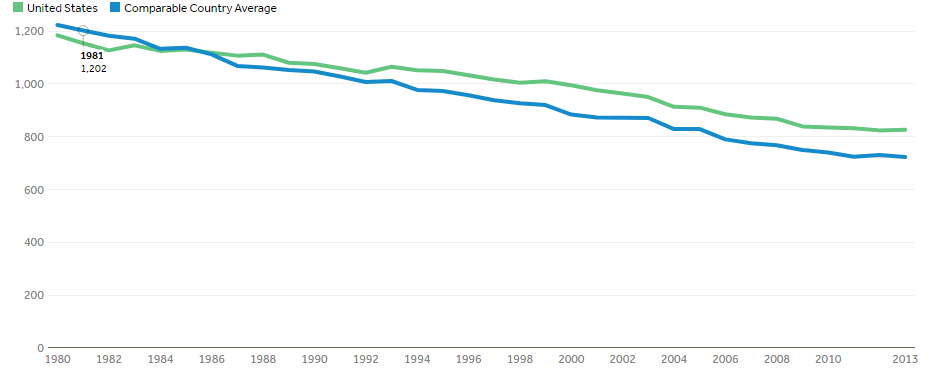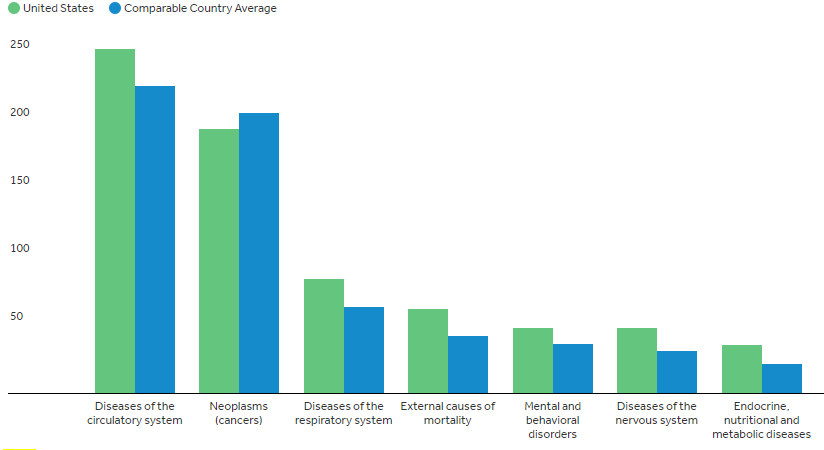The Canadian health care system is funded by the state and can be described as a system of insurance and health plans for ten provinces and three territories. This system is known as Medicare and it provides free or almost free medical care and medical services to all Canadian citizens. In Canada, as stated by Ridic, Gleason, and Ridic (2012), health care is based on a single-payer healthcare principle: every legal resident is covered by publicly funded provincial or territorial plans.
On the contrary, the individual mandate obtained from the Republican precedent in, for example, Massachusetts is strikingly different from Canada’s universality principle. Despite the fact that Obama’s Affordable Care Act reforms expanded the coverage, an individual mandate in the US is based on the fundamental principle of insurance. In particular, the fact that the type of coverage identifies the amount of medical services forces Americans to purchase insurance in order to have access to them.
The availability of health insurance is not equivalent to universal access to health services in both Canada and the US. In practice, insurance is available to everyone, but medical services may be limited, or people have to wait a long time for treatment. Americans are provided with more affordable insurance ways and options to cover their expenses, and people with the lowest income are eligible for state insurance through the expansion of the Medicaid program (Shi & Singh, 2015).
Most Americans still have access to medical assistance through various health insurance plans provided or paid by their employer. For example, “nearly 50 million elderly and disabled through the federal Medicare program; another 60 million lowest-income through state-federal Medicaid arrangements” (Maioni, 2013, para. 2). The detailed information on morbidity and mortality in Canada and the US is presented in Figure 1 and Figure 2.


The issue of unequal access should be emphasized while discussing health care payer systems of the identified countries. It is possible to note that Canada has some problems with waiting time and timely medical care, but the situation with access to medical services in the US is even worse. Obamacare tried to resolve this problem in its provisions for insurance reform, including the improvement of the existing conditions and limited co-payments (Milstead, 2013).
However, it merely reinforced the conception that access to health care depends not on the specific needs, but on one’s capability to afford it (Maioni, 2013). As for health insurance, the amount of benefits depends on age, health, income, and insurance type. In Canada, however, access to medical services does not depend on the mentioned factors that reveal its social justice and a socialized nature.
As for the financial aspect, the Affordable Care Act included only an overview of Medicare insurance and the expansion of accountable health organizations. It did not affect the problem of the general inefficiency of spending in the area of health care and financing. On the contrary, Canada’s government comprehends that healthcare is their financial responsibility, thus taking measures to control rising costs by negotiating with service providers and general budgets for hospitals, which is not done in the US.
In the light of the mentioned comparison, it becomes evident that the role of nurses in the US is to promote patient safety and access to health care services, so that patients will be provided with them in an appropriate way. The Nursing Workforce Reauthorization Act of 2017 (S. 1109) was suggested by the Nursing Community to enhance patient access via nurse education based on theory and practice (“Legislation”, 2017). To sum it up, one may state that the US and Canada have different health care systems, yet each of them has both positive and negative points that were mentioned in this paper.
References
Gonzales, S., & Sawyer, B. (2017). How do mortality rates in the U.S. compare to other countries? Web.
Legislation. (2017). Web.
Maioni, A. (2013). Obamacare vs. Canada: Five key differences. Web.
Milstead, J. A. (2013). Health policy and politics: A nurse’s guide (4th ed.). Burlington, MA: Jones & Bartlett Learning. Web.
Ridic, G., Gleason, S., & Ridic, O. (2012). Comparisons of health care systems in the United States, Germany and Canada. Materia Socio-Medica, 24(2), 112-120. Web.
Shi, L., & Singh, D. A. (2015). Essentials of the US health care system. Burlington, MA: Jones & Bartlett Learning. Web.